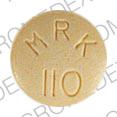Rofecoxib Dosage
Applies to the following strengths: 12.5 mg; 25 mg; 50 mg; 12.5 mg/5 mL; 25 mg/5 mL
Usual Adult Dose for:
Usual Pediatric Dose for:
Additional dosage information:
Usual Adult Dose for Osteoarthritis
Rofecoxib was voluntarily withdrawn from the market in September, 2004 by the manufacturer due to an increased risk of serious cardiovascular events, including heart attacks and strokes among patients taking the drug chronically. The following dosage information applies to when the drug was available in the USA.
12.5 mg orally once daily. May increase to a maximum of 25 mg orally once daily.
Usual Adult Dose for Rheumatoid Arthritis
Rofecoxib was voluntarily withdrawn from the market in September, 2004 by the manufacturer due to an increased risk of serious cardiovascular events, including heart attacks and strokes among patients taking the drug chronically. The following dosage information applies to when the drug was available in the USA.
25 to 50 mg orally once daily.
Usual Adult Dose for Dysmenorrhea
Rofecoxib was voluntarily withdrawn from the market in September, 2004 by the manufacturer due to an increased risk of serious cardiovascular events, including heart attacks and strokes among patients taking the drug chronically. The following dosage information applies to when the drug was available in the USA.
50 mg orally once daily for no more than 5 days.
Study (n=70) - Knee Replacement surgery, pain management and recovery of function:
50 mg orally at 24 hours and at 1 to 2 hours before surgery, 50 mg daily for 5 days postoperatively, and 25 mg daily for another 8 days.
Study (n=161) - Chronic nonbacterial prostatitis:
25 mg to 50 mg orally once daily for 6 weeks.
Usual Adult Dose for Pain
Rofecoxib was voluntarily withdrawn from the market in September, 2004 by the manufacturer due to an increased risk of serious cardiovascular events, including heart attacks and strokes among patients taking the drug chronically. The following dosage information applies to when the drug was available in the USA.
50 mg orally once daily for no more than 5 days.
Study (n=70) - Knee Replacement surgery, pain management and recovery of function:
50 mg orally at 24 hours and at 1 to 2 hours before surgery, 50 mg daily for 5 days postoperatively, and 25 mg daily for another 8 days.
Study (n=161) - Chronic nonbacterial prostatitis:
25 mg to 50 mg orally once daily for 6 weeks.
Usual Adult Dose for Migraine
Rofecoxib was voluntarily withdrawn from the market in September, 2004 by the manufacturer due to an increased risk of serious cardiovascular events, including heart attacks and strokes among patients taking the drug chronically. The following dosage information applies to when the drug was available in the USA.
25 mg orally once daily. May increase to a maximum of 50 mg orally once daily.
Usual Pediatric Dose for Pain
Rofecoxib was voluntarily withdrawn from the market in September, 2004 by the manufacturer due to an increased risk of serious cardiovascular events, including heart attacks and strokes among patients taking the drug chronically. The following dosage information applies to when the drug was available in the USA.
Study (n=66) - Posttonsillectomy pain management:
3 to 11 years: 1 mg/kg oral suspension administered 45 minutes before induction of anesthesia.
Usual Pediatric Dose for Rheumatoid Arthritis
Rofecoxib was voluntarily withdrawn from the market in September, 2004 by the manufacturer due to an increased risk of serious cardiovascular events, including heart attacks and strokes among patients taking the drug chronically. The following dosage information applies to when the drug was available in the USA.
Pauciarticular and Polyarticular -
=>2 years to <=17 years:
>=10 to 42 kg; 0.6 mg /kg to a maximum of 25 mg oral suspension daily
>=42 kg: 25 mg orally daily
Renal Dose Adjustments
Rofecoxib is not recommended for use in patients with advanced renal disease.
Liver Dose Adjustments
In patients with mild to moderate liver disease, use of a lower dose with caution is recommended due to the increased possibility of side effects. Liver function tests should be monitored in these patients.
Rofecoxib is not recommended for use in patients with severe hepatic impairment.
Dose Adjustments
Dosage adjustment in the elderly is not necessary. Rofecoxib should be started at the lowest recommended dose.
Precautions
Serious gastrointestinal toxicity such as bleeding, ulceration, and perforation of the stomach, small intestine or large intestine, can occur at any time, with or without warning symptoms in patient taking nonsteroidal anti-inflammatory drugs. Rofecoxib should be used with caution in patients with a prior history of ulcer disease or gastrointestinal bleeding. It is recommended that the lowest effective dose be administered for the shortest possible duration.
Rofecoxib should be used with caution in patients with fluid retention, hypertension or heart failure as fluid retention and edema has been observed in some patients.
Rofecoxib should not be given to patients who have experienced asthma, urticaria, or allergic-type reactions after taking aspirin or other nonsteroidal anti-inflammatories. Severe, rarely fatal, anaphylactic-like reactions to nonsteroidal anti-inflammatories have been reported in such patients.
The use of rofecoxib on a daily basis for the acute treatment of migraine is not recommended.
The safety of treating more than 5 migraines attacks in any given month has not been established.
Dialysis
Rofecoxib is not removed by hemodialysis. It is not known if rofecoxib is removed by peritoneal dialysis.
Other Comments
Rofecoxib should not be used in place of corticosteroids.
The safety and effectiveness of rofecoxib in the treatment of cluster headaches has not been established.
More about rofecoxib
- Check interactions
- Compare alternatives
- Reviews (56)
- Side effects
- During pregnancy
- Drug class: cox-2 inhibitors
Patient resources
Other brands
Related treatment guides
Further information
Always consult your healthcare provider to ensure the information displayed on this page applies to your personal circumstances.

